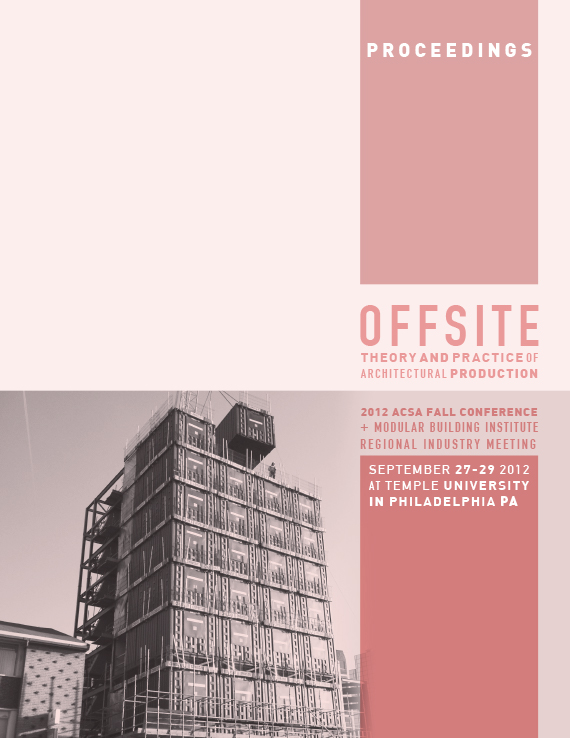Author(s): Kyle Steinfeld & Michael Bergin
The design of houses has become a highly mechanized process with themost recently available data generously indicating that 28% of houses havedirect involvement with an architect. The vast majority of homes in theUnited States have been built using mass-production tract housing methodswhere similar home plans are copied, mirrored and rotated to create cul-desaccommunities in suburbs throughout the country. The author proposes adesign system that combines Multi-Objective Optimization algorithms withBuilding Information Modeling parametric software allowing for architectsto loosely prescribe designs that can then be tailored to each individualfamily and variable climactic conditions through the optimization process.The author presents a series of flexible design methodologies for the tailoredproduction of search spaces or Design of Experiments (DoE) for theoptimization of the house model for a variety of criteria. A typical optimizationroutine takes a flexible parametric model and manipulates parameterseither through a brute force method (testing every possible scheme) or usinga search method such as genetic algorithm or simulated annealing to findthe most optimal solutions.2 In this study, the criteria used to determine anoptimal solution is made possible through goal sets, algorithms that codethe preferences of an individual designer or community of homeowners byweighting the importance of performance criteria. The accuracy and successof a goal set in driving a flexible parametric model towards a desiredsolution depends in large part on the type and number of simulations thatare loaded into the design software environment. Simulated criteria thathave been implemented include day lighting analysis, minimal code compliance,power consumption, cost based on RSMeans construction data, and avariety of spatial adjacency and size requirements.The availability of modeled family elements produced by many buildingproduct manufacturers allows catalogues of building elements to becomepart of the search space. Instead of modeling generic surfaces and volumesin the design software, actual building components can be dispatched atthe design stage. A robust database of prefabricated components wouldeffectively allow a design to search for alternative means of manufacturingitself that may be unknown to the designer. A database of pre-usedconstruction materials is proposed so that solving algorithms can presentthese alternatives to the designer/client for evaluation as potential solutionsand reduce the embodied energy required for new construction projects.The fact that 72% of houses are not designed for their site and inhabitants istroubling. Each community and building site has unique needs and conditionsthat are rarely addressed in the current system of production. In 2010 therewere as many out of work architects as there were homes built by the five largesthome builders in the United States.3 A system as described would make itcost effective for these architects to interface with clients who desire customizationsto a home through a web interface. The successful implementation ofthis mass-customization design system will bring about more comfortable andunique housing solutions that use less energy, receive more daylight and areproduced in the most effective manner for durability and cost.1 LaBarre, Suzanne. “Truth in Numbers.” Truth in Numbers. MetropolisMagazine, 15 Oct. 2008. Web. 30 Mar. 2012.2 Flager, Forest, Welle B, Bansal P, Soremekun G and Haymaker J, ‘Multidisciplinaryprocess integration and design optimization of a classroombuilding’, ITcon, Vol 14, 2009, pp 595–612.3 Hughes, CJ “Exactly How Many Architects in the U.S. Are Unemployed?”Architectural Record, 10 Oct. 2010.
Volume Editors
John Quale, Rashida Ng & Ryan E. Smith
ISBN
978-0-935502-85-5

 Study Architecture
Study Architecture  ProPEL
ProPEL 
